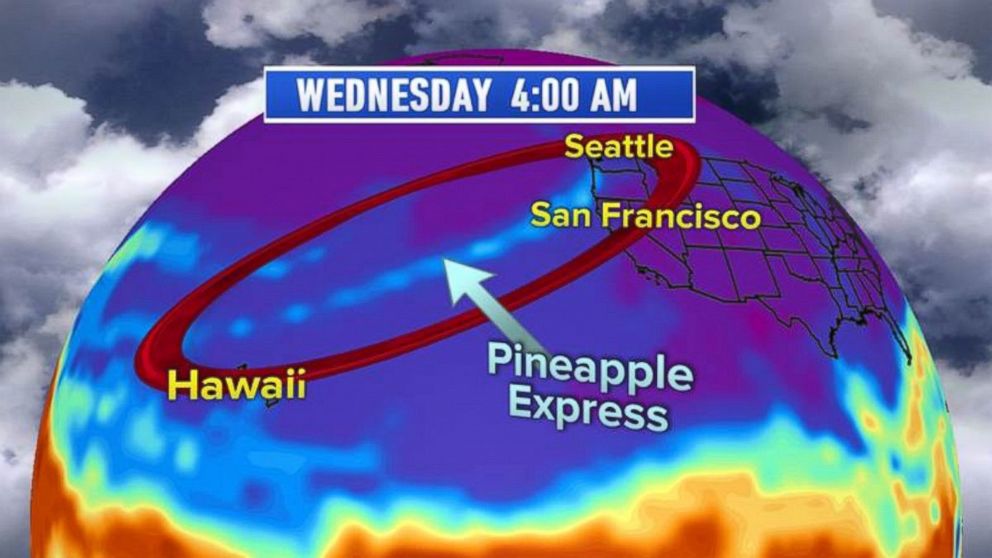What's Behind the Unusual Weather Patterns in the US
Autumn 2015 ranks as the warmest in 121 years of recordkeeping.
— -- Buffalo, New York, is usually one of the snowiest cities east of the Rockies. By the middle of December, it usually has an average of 14.8 inches of snow. But it hasn't snowed once this year in Buffalo, breaking a 116-year-old record. In New York City, it’s been the warmest November on record, averaging more than 5 degrees above normal for the month. In Philadelphia, last November was the warmest in 75 years. Overall, autumn 2015 ranks as the warmest in 121 years of recordkeeping.
It’s also been unusually warm in the Great Lakes and Midwest. Take a look at Ashland, Wisconsin. At this time last year it was completely frozen. Today it's completely free of ice.
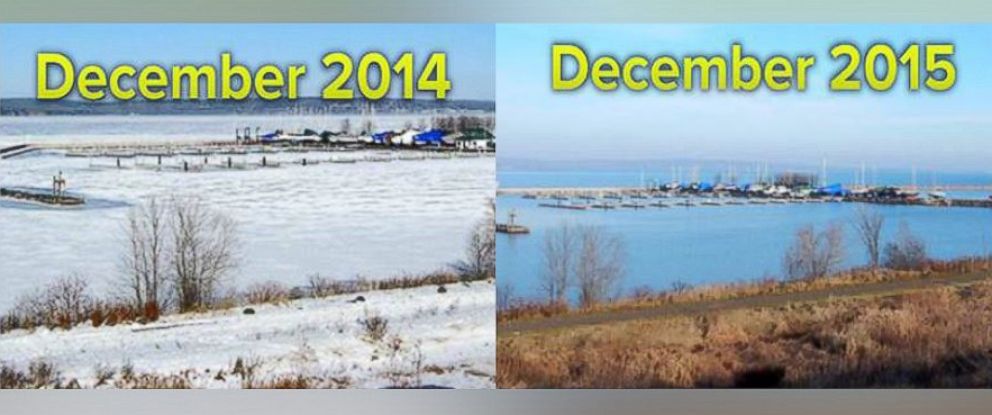
Why you ask has it been so warm in the East? Is this related to El Nino, or is it something else? Today, the National Oceanic and Atmospheric Administration (NOAA) issued its El Nino forecast update for this winter. Mike Halpert, deputy director at NOAA’s Climate Prediction Center, said that the warmth in the Eastern U.S. cannot be tied to El Nino just yet. The set up in the upper atmosphere over the mid-latitudes, where most of the U.S. is, has not shown the classic El Nino pattern. Moreover, he said that an atmospheric phase known as positive North Atlantic Oscillation (+NAO) is responsible for the current mild pattern in the Eastern U.S.
The strengthening upper level flow between the high pressure to the South and low pressure to the North is what has been creating mild weather in the Eastern U.S. since the beginning of November.
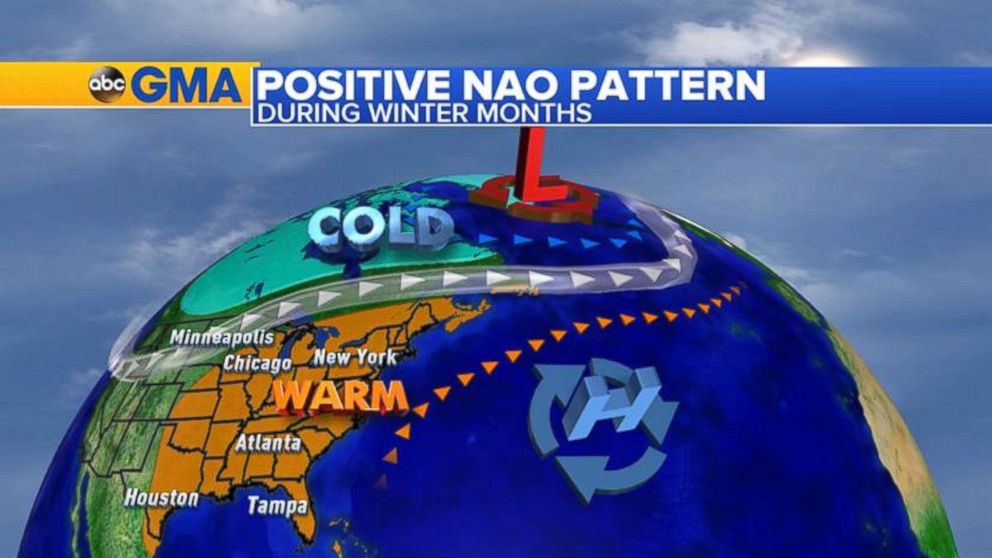
This pattern will last right into next week for the Northeast. Chicago and NYC will be in the 60-degree range and places like Atlanta will hit the mid-70s. Some of these temperatures could tie or break previous records.
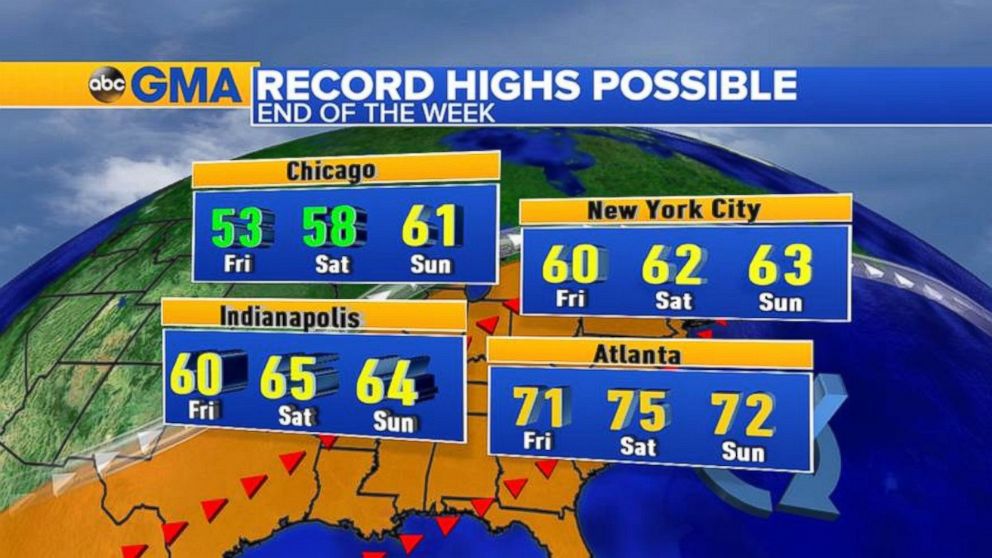
While the Eastern U.S. has been relatively calm and warm, parts of the West have been battered by strong winds, flooding rains, mudslides, 30-foot waves, and heavy mountain snow. Here is damage from a mudslide that happened in Burien, Washington, just south of downtown Seattle on Wednesday.
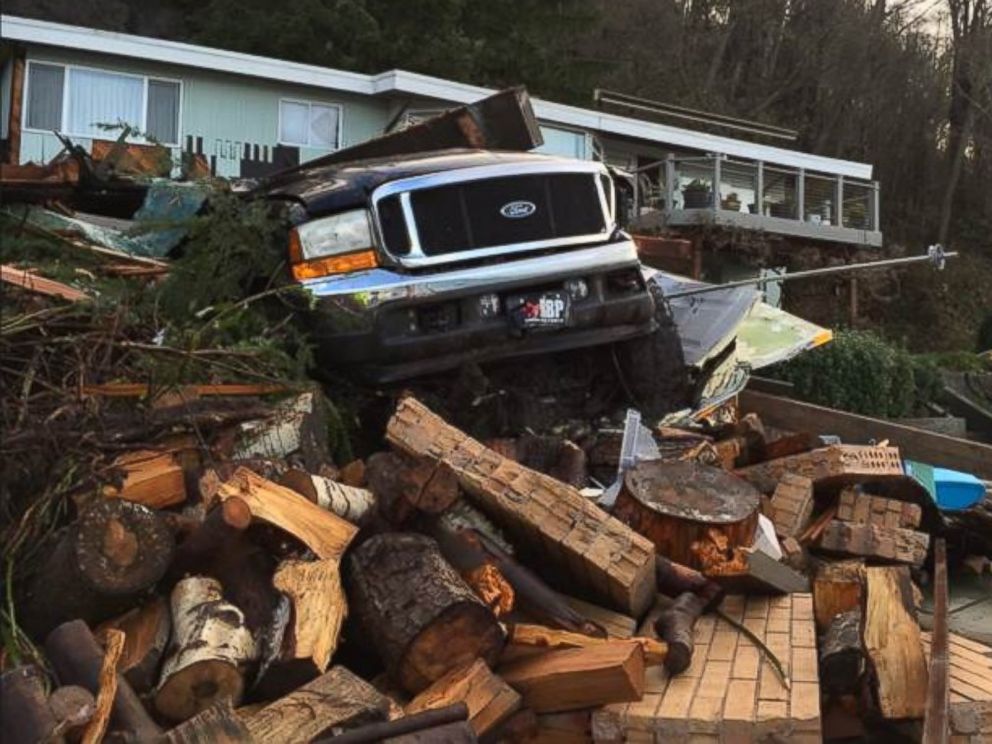
Parts of the Pacific Northwest received up to 18 inches of rain in the past three days with many rivers rising into major flood stage. Portland had record rain for two days in a row. Seattle had record rain Tuesday, breaking the old record set back in 1971.
The Western stormy weather is also not fully related to El Nino -- it’s what we call in meteorology a “Pineapple Express." This moisture is driven and enhanced by a strong Pacific jet stream. Here is satellite imagery of precipitable water in the atmosphere over the Pacific Ocean. You can see the “Pineapple Express” circled in red.
